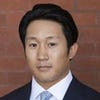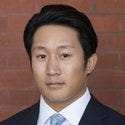How ‘Agile’ Changed Security At Dun & Bradstreet
Chief Security Officer Jon Rose shares the whys and wherefores of integrating agile software development methodology into a traditional security environment.

In this wide-ranging cybersecurity expert interview, Bishop Fox Partner Vincent Liu chats with the CSO of Dun & Bradstreet, Jon Rose. The two discuss the commercialization of security, the road to becoming a CSO, and how Agile helped his security team take control of day-to-day activities and better manage priorities. We excerpt highlights below. You can read the entire interview here.
Third in a series of interviews with cybersecurity experts by cybersecurity experts. (Read first, second, fourth, fifth, and sixth)
VINCENT LIU: Can you share your perspective on the commercialization of security and how that has changed things?
JON ROSE: I remember when some of the “hacker” certifications first came out. We would talk to people who were certified, and it became immediately clear that they often lacked the background or the interest to explore technologies or systems. What I see, though, is that there is such a demand for people with this knowledge, and because of that, more people are learning security-related skills. They don’t, however, always have the passion that was prevalent back in the day.
On the other hand, there is the constant growing list of security products. After a breach, many companies throw millions of dollars into solutions. They implement them incorrectly, and no one knows how to manage or run them. It doesn’t accomplish anything except temporarily provide the image of increasing security.
VINCENT LIU: I see that all the time. Do you feel like other CSOs and CISOs are recognizing that this buy-a-tool approach isn’t sustainable? Are they seeing the holes in “fake security?”
JON ROSE: I think many security leaders are just buying things. There’s a lack of understanding about how breaches happen. You have to think like an attacker. The first thing I did at Dun & Bradstreet was staff and build up our security operations center, specifically our incident response program. Bad things will happen. It’s just a matter of when, so you have to be prepared to respond.
VINCENT LIU: There are folks who learn how to run a few commands, earn a Certified Ethical Hacker certification, and call themselves “pen testers.” But you were deep in tech, code review, complex exploit chains. How did that influence your current role? Did you have other roles that influenced what you’re doing now?
JON ROSE: I started consulting for the government. Then, I moved to New York and worked at Ernst & Young. That was when the major banks started application security programs. We wrote a lot of poorly constructed hacking tools that, at the time, got the job done. After that, I did several stints at various boutique consulting firms, which was exciting because I learned so much since we basically had to “do it all.” I next shifted gears and took a job as a product manager.
VINCENT LIU: How did being a product manager shape you?
JON ROSE: That was when I learned Agile and how to manage multiple teams and prioritize and organize work. Honestly, I also became much better at managing crisis. As a pen tester, there’s not many crises (except if I knock over something important). As a product manager, I was on the other side. We were building systems for customers, and if those went down, the customers couldn’t get any value from them.
It also helped me to think about customers and software development and the sales cycle. From there, I started a consulting company. I later joined Dun & Bradstreet as the Chief Security Officer. One of the things that helps me as CSO is that blended experience of deep technical knowledge combined with the business view from being a product manager and leading Agile teams.
VINCENT LIU: It’s fairly unusual to hear about security teams adopting an Agile methodology. What attracted you to Agile?
JON ROSE: Dun & Bradstreet is at an interesting crossroads. We’re investing in technology and a huge part of that is security. We previously outsourced our security functions and heavily relied on managed security services. This approach doesn’t always work. After being a product manager, I understand Agile very well. We started it with the application security team as an experiment. Our work was reactive, and I wanted to shift that. We took control of our day-to-day activities and were able to better manage to our priorities. We also established processes for how other teams engage with us.
VINCENT LIU: What are the advantages from a security perspective?
JON ROSE: We began controlling the workflow and managing the incoming ad-hoc work. Morale skyrocketed almost immediately. The “lone wolf” pen testing team started talking about their projects and problems they were experiencing, and ultimately began solving them. It was amazing to witness that transformation. Agile changed how everyone worked. Letting employees shape how their teams work, how they interact with each other, and the processes that they use is empowering.
VINCENT LIU: If other organizations wanted to pilot this more agile method of management, where would they start?
JON ROSE: We asked the developers to describe how they ran their sprints and implemented agile. If you’re new to Agile, find some developers and pick their brains. Then, we ran Agile with our application security group. Agile is an experiment, and everyone conducts it differently. The key is taking that first step and having people on your team who are willing to try, take a risk, and do something different. You learn how to work slowly over time.
VINCENT LIU: Can you elaborate on the challenges of moving to Agile?
JON ROSE: Communication problems became apparent. To address those, we put in Agile practices and managed the ways that teams work internally as well as externally. Those interaction points are where the frustration generally appears. When it’s not clear, we have issues. I believe in light project management. Some people resisted at first, but now everyone loves it. Responsibilities are crystal clear.
VINCENT LIU: Where does Agile work? Where doesn’t it?
JON ROSE: Our security operations team — which is naturally reactive — has run into some problems with Scrum, a form of Agile which is time boxed. The team was struggling to keep up with requests. It was a perpetual cycle of trying to keep their heads above water. Agile forced the team to track incoming work requests, prioritize those, and schedule those.
VINCENT LIU: Does Agile fit perfectly or did you modify it for a security setting?
JON ROSE: There will always be adjustments for differing environments and requirements. We’ve had to shift it for our needs. For instance, we’re not releasing code like a development team so it’s a little different.
VINCENT LIU: Where does the manager factor into the Agile equation?
JON ROSE: The manager’s job is to help the team move faster and work better. In the daily stand-up, they identify potential issues and then eliminate them. This creates an awesome dynamic between the manager and the team. Above all else, the manager is a champion for the team and always fighting for their best interests. At the daily stand-up, everyone discusses what they did yesterday, what they’re doing today, and any problems. This motivates people to take ownership and accountability for their tasks.
PERSONALITY BYTES
On hiring: You want people with that hunger and passion, and who ask questions. I’m focused on building a strong team and finding the right people with the right mindset. I’m not necessarily referring to technical skills but knowing how to effectively problem solve.
Getting started: I’m inquisitive by nature, and became interested in computers and Linux when I was in high school. At the time, I had a connection to a CTO of a security-focused defense contractor. I interned at the company for the summer, read “Hacking Exposed Linux,” and quickly learned the various tools. That job was my introduction to pen testing and was where it all really started.
CSO management styles: Some CSOs are more focused on compliance and policies. I lean toward the technical side. I also put a heavy focus on relationship building, building the framework for working collaboration, as well as higher-level organizational structure. You don’t need a technical background, but you have to be able to map technical risks to business risks and goals so you can talk to anyone from your board to non-technical stakeholders, and have your message be heard and understood.
Bio: Jon is a unique combination of an innovative entrepreneur with the proven ability to lead Fortune 500 companies into success. With over 16 years of experience launching products, securing environments, training and educating technology teams, and building Agile security organizations, Jon has a deep and wide understanding of organizational capabilities for both start-ups and large scale organizations, including Ernst & Young, Paypal, and today is the chief security officer for Dun & Bradstreet.
About the Author
You May Also Like




